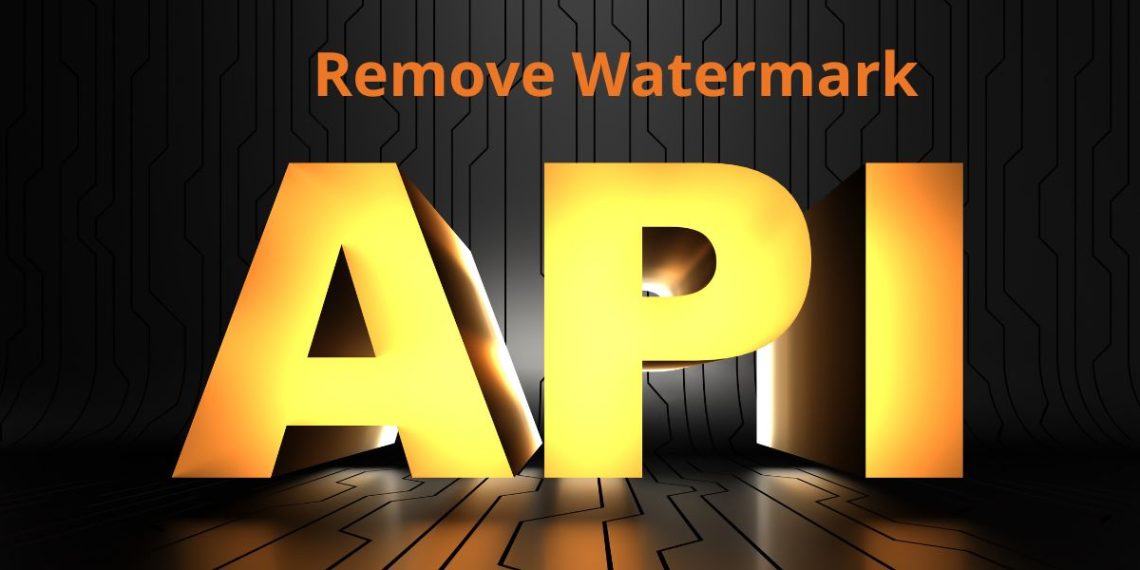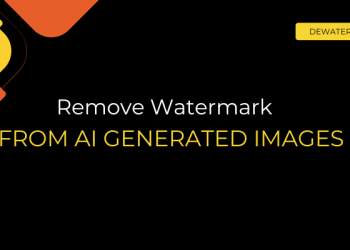Watermarks can get in the way, whether you’re prepping product photos, managing user uploads, or creating clean visuals for your app. Instead of removing them manually, many platforms are now turning to AI-powered watermark removal APIs to automate the process. But with so many options out there, which one should you choose?
In this guide, we’ve reviewed the best remove watermark APIs based on real use cases, comparing them by features, pricing, supported formats, and quality of results. Let’s dive into the top picks and see how they stack up.
Top 5 remove watermark APIs to consider
Dewatermark
Dewatermark is a dedicated tool for AI-based watermark removal. Unlike general-purpose editors or background removers, this tool is built specifically for eliminating watermarks from images using deep learning models that understand both image context and watermark placement.
It’s fast, developer-friendly, and built with security and scalability in mind, making it a great choice for businesses, developers, and platforms handling large volumes of images.

Dewatermark key features:
- Automatic watermark & logo removal
- Supports image URL or base64 upload
- Clean REST API that’s easy to integrate
- Files are SSL/TLS encrypted and auto-deleted after 1 hour
- Works on common formats like JPG and PNG
Dewatermark’s pricing is flexible and transparent:
- Free tier: 3 images/day at no cost
- Pay-as-you-go: $0.10 per credit
- Enterprise: Custom price and feature
It’s affordable and ideal for startups and large-scale users alike
The biggest strength of Dewatermark API lies in its watermark removal accuracy. It performs exceptionally well even on semi-transparent logos and watermarks that overlay complex backgrounds. Developers will appreciate the straightforward authentication process using a Bearer Token, which makes integration fast and secure.
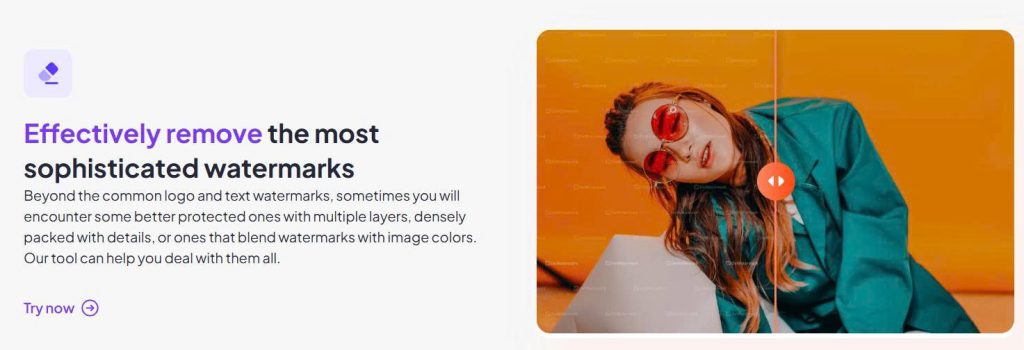
One of Dewatermark’s standout features is its privacy-first approach. Uploaded images are transmitted via SSL/TLS encryption, never stored, and automatically deleted after one hour. Combined with a fast response time and reliable performance on both single and batch jobs, the API is a strong fit for platforms that require speed and scale.
Another plus: there’s no subscription required. You simply pay per processed image, and the generous free tier (3 images per day) makes it ideal for testing or occasional use.
Its clean documentation and flexible integration make it a seamless fit for custom apps or backend tools. This API is especially useful for e-commerce platforms that need to clean supplier images before publishing, as well as content moderation workflows or automation tools that require high-quality, watermark-free visuals with minimal human input.
HitPaw Watermark Remover API
HitPaw is a well-known name in the consumer photo and video editing space, and it also offers an API for watermark removal. While its desktop tools are geared toward casual users, the API gives developers access to similar features for programmatic use.
The HitPaw Watermark Remover API is primarily designed for image watermark removal, and it performs well on simple to moderately complex watermarks. It’s especially effective on logos, text overlays, and static placements commonly found in downloaded images or screenshots.
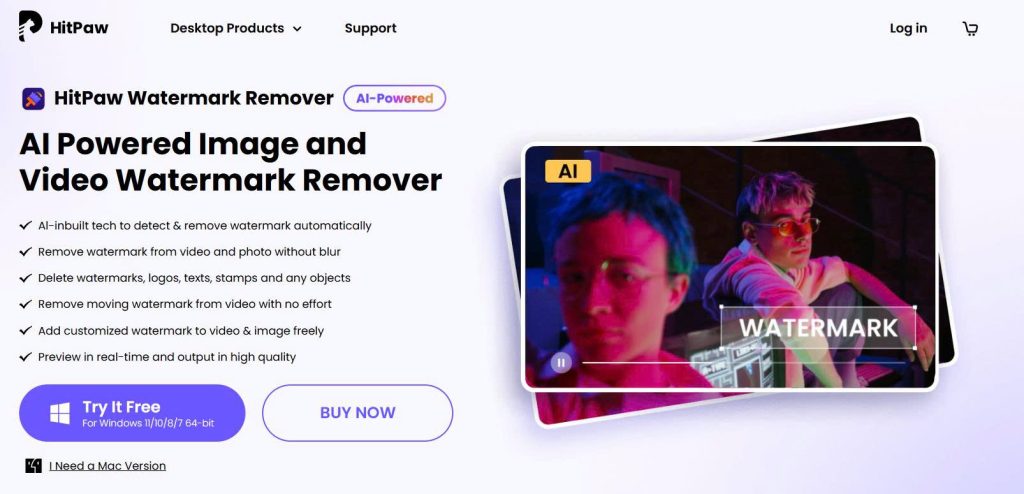
In terms of usability, the API provides token-based authentication and supports basic batch processing. However, it’s important to note that pricing details are not publicly listed, and potential users will need to contact the company or sign up to view full plan options. HitPaw follows a subscription-based model, which may suit businesses with predictable, ongoing usage.
One of the advantages of HitPaw is its focus on clean visual output; results are smooth, especially on plain or lightly textured backgrounds. That said, it may struggle with more complex removals, such as watermarks over detailed patterns or transparency.
While the API is relatively easy to use, it lacks the robust developer documentation or flexibility of more technically-focused tools. This makes it better suited for platforms or apps that want a lightweight solution with minimal configuration rather than deep customization.
Apowersoft API
Apowersoft is another well-established name in the image and video editing space. While it’s mostly known for its desktop applications, the company also offers an online watermark remover API that supports both image and video watermark removal, making it one of the few options on this list with multimedia support.
The API is designed to integrate with external platforms, but unlike more developer-centric tools, Apowersoft focuses more on providing a ready-made solution rather than a fully customizable backend service. This can be an advantage for teams who want to plug in a prebuilt tool, but it may lack the flexibility that advanced users need.
One of its strengths is its ability to process both images and videos, which opens the door for platforms working with marketing content, media libraries, or video-based courses. However, in practice, its removal accuracy varies.
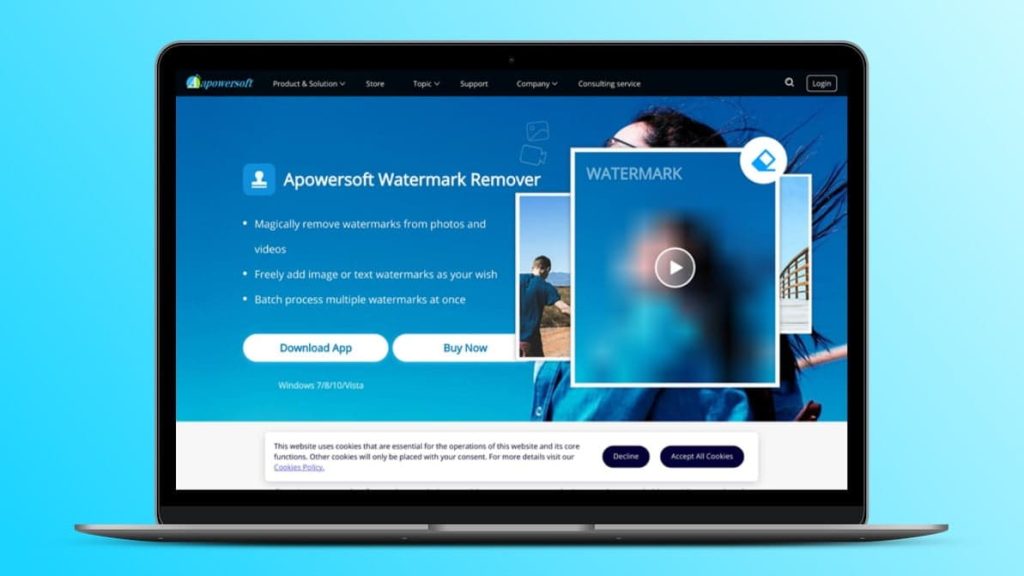
It tends to perform best on static, predictable watermarks like logos or timestamps, but may struggle with overlays that span complex backgrounds or move across frames in video.
The pricing model is subscription-based, and the company does not offer a traditional pay-as-you-go API plan. This may be limiting for projects that process images in irregular volumes or for users looking to test the service before committing.
Apowersoft’s API is best suited for media companies or video-heavy platforms that want an all-in-one watermark remover with basic automation. However, its lack of flexible pricing and technical transparency might not make it the top choice for developers looking to deeply integrate or scale the tool.
Removebg API
While Removebg is primarily designed for background removal, many developers and creative teams have found creative ways to repurpose it for basic watermark-like object removal, especially when the watermark is part of a solid background or positioned near the edges of an image.
Removebg uses AI to detect and isolate the main subject in a photo, then removes everything else. In cases where the watermark is placed on the background (e.g., behind a person or product), the API can sometimes help eliminate the watermark indirectly by removing the entire background.

However, this approach is not ideal for most watermark-specific use cases, especially when the watermark overlaps with the subject or spans complex areas. The API is known for being fast, easy to use, and well-documented, which makes it popular among developers, even beyond its intended use. Authentication is handled via an API key, and integrations are supported for popular platforms like Zapier, Figma, and more.
In terms of pricing, Removebg follows a credit-based system, with a free tier available for testing and small-scale usage. This makes it accessible for early-stage projects or platforms that want to explore image automation without immediate cost.
That said, if your goal is true watermark removal, Removebg might not be the best fit. It’s more suitable for teams that also need to remove backgrounds and are looking for a multipurpose image processing API with potential side benefits in light watermark scenarios.
Watermarkremover.io
WatermarkRemover.io is an AI-based watermark removal, created by the team at PixelBin.io. The API offers a simple, RESTful interface that accepts image uploads and returns clean versions with watermarks intelligently removed. It performs particularly well on logo-style watermarks, semi-transparent text overlays, and repetitive patterns, making it suitable for both personal and commercial use.

One of its key strengths is the clarity of output. The AI tries to preserve the image’s original look while filling in the areas previously obscured by watermarks, which results in surprisingly natural results, even in detailed image regions.
However, advanced control over the removal process (such as manually marking watermark zones) isn’t available, as everything is handled automatically by the AI.
Quick comparison: Best watermark removal APIs
Let’s look at all 5 tools side-by-side to find out which is the best watermark removal APIs. Accuracy ratings are based on watermark complexity (transparency, placement, background interference).
| API | Supports | Batch Support | Pricing | Accuracy | Best for |
| Dewatermark | JPG, PNG | Yes | Pay-as-you-go (3 free/day) | ⭐️⭐️⭐️⭐️⭐️ | E-commerce, dev tools, automation pipelines, image stock sites |
| HitPaw | JPG, PNG | Yes | Subscription (details on request) | ⭐️⭐️⭐️ | Social media apps, casual editors |
| Apowersoft | Images, Videos | Limited | Subscription-based | ⭐️⭐️⭐️ | Media platforms, basic video image cleanup |
| Removebg | JPG, PNG | Yes | Credit-based | ⭐️⭐️ | Background removal with watermark side effect |
| WatermarkRemover.io | JPG, PNG | Yes | Monthly pricing tiers | ⭐️⭐️⭐️⭐️ | Developer APIs, image platforms, SaaS tools |
Are you processing a handful of images daily or tens of thousands per hour? For small batches, an API like WatermarkRemover.io or Dewatermark with a generous free tier may be ideal. But if you’re dealing with high-volume workflows, you’ll want something scalable, like Dewatermark with batch support and fast response times.
If your team is building a custom tool or backend system, RESTful APIs with token-based authentication (like Dewatermark or WatermarkRemover.io) are easier to plug in and automate. On the other hand, Apowersoft may be more suitable for semi-technical users who prefer a prebuilt or desktop-style solution with limited developer involvement.
If you’re handling sensitive or user-generated content, make sure the service doesn’t store or share files unnecessarily. Dewatermark stands out here with automatic image deletion after one hour, plus SSL/TLS encryption, making it a strong pick for privacy-conscious platforms.
Finally, check if the API supports all the file types you need. Most tools work with JPG and PNG, but only a few, like Apowersoft, offer video watermark removal, which could be crucial for multimedia platforms.
So, what is the best watermark remover API? There’s no one-size-fits-all answer, but based on our comparison, each watermark removal API shines in different scenarios. Ultimately, if watermark removal is a core part of your image processing workflow, Dewatermark API offers the most balanced mix of power, privacy, and affordability.


